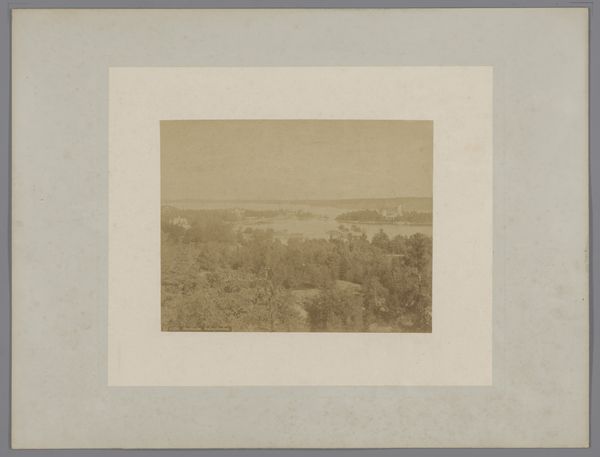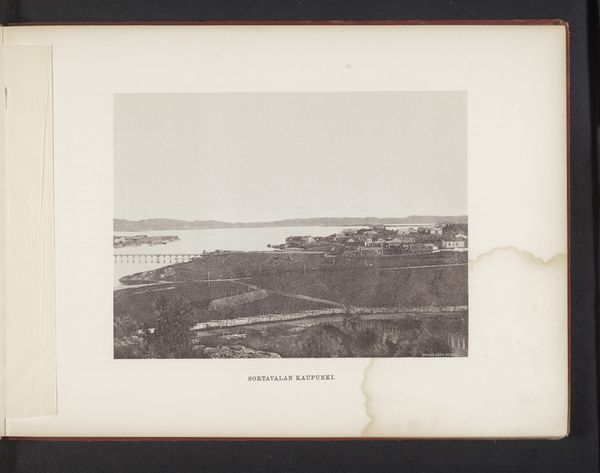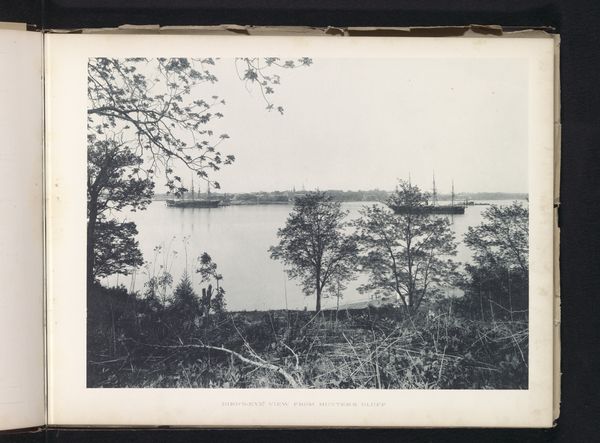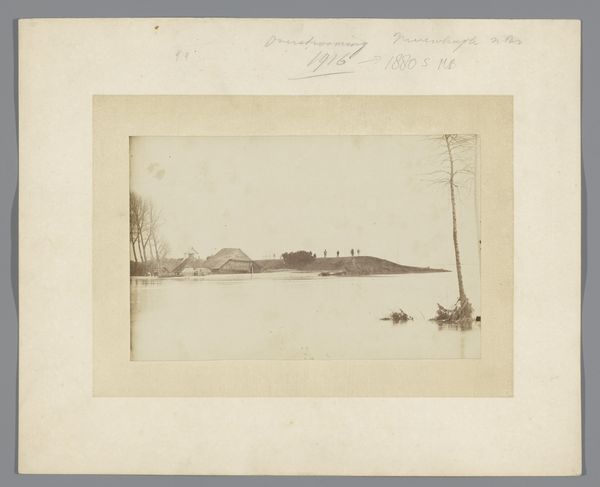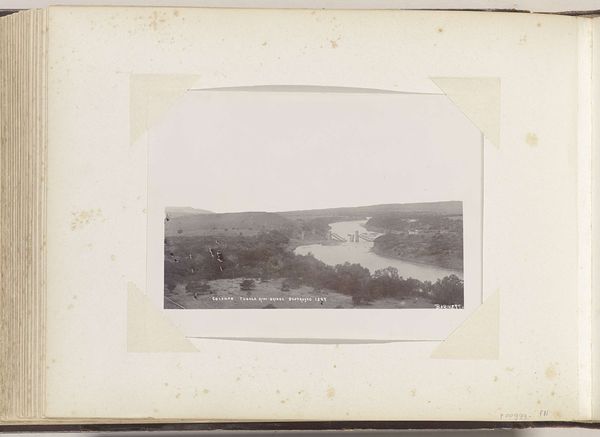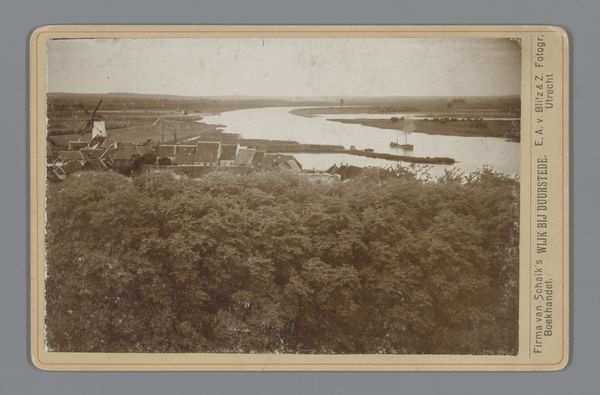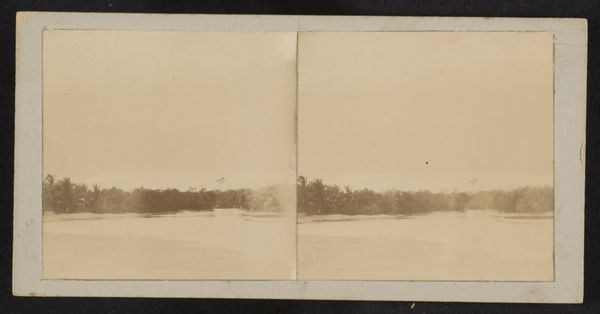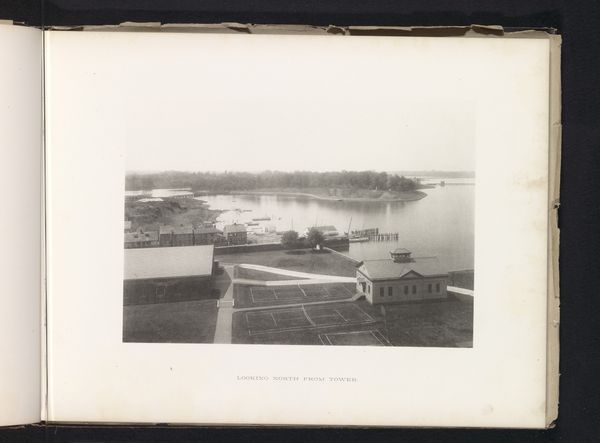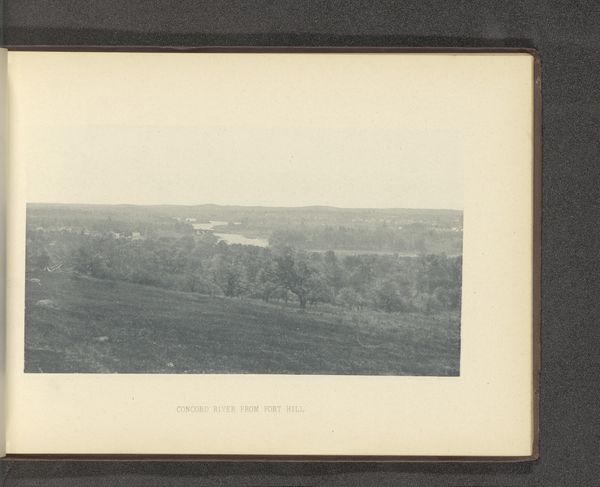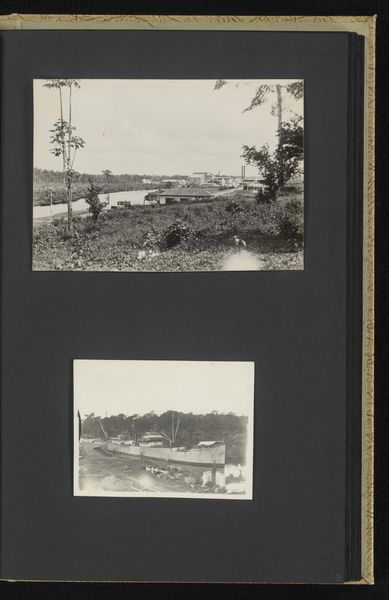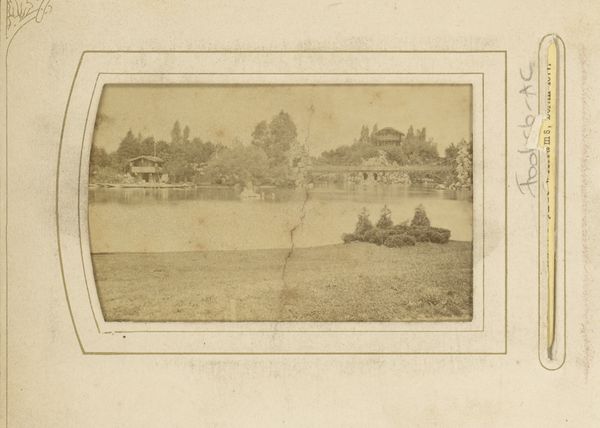
print, photography, albumen-print
#
16_19th-century
# print
#
landscape
#
photography
#
albumen-print
Dimensions: 29.2 × 41.9 cm
Copyright: Public Domain
Curator: We’re looking at a photograph titled "The Madame B Album," made around the 1870s. It’s an albumen print, part of a larger album at the Art Institute of Chicago, made by Marie-Blanche Hennelle Fournier. Editor: My initial thought is how tranquil the scene is. The soft sepia tones lend an air of faded elegance to the lakeside property and make me want to escape the noise and pollution of modernity. Curator: The album's construction itself is quite telling. The sepia tones aren't just aesthetic but symbolic, harking back to a very specific era, laden with societal rules for bourgeois women and expectations for preserving memory and history through these photographs. The album would become a cultural artifact in and of itself, almost like a memory palace. Editor: Precisely, it's interesting to consider why Madame B chose to document this landscape and architectural structure. Was this a place of personal significance, and what does it reveal about her class and social standing that she could afford to commission and collect these images? Photography, even at this stage, carried a definite class marker, determining access to both the subject matter depicted and the act of artistic creation itself. Curator: Right. There's an implication of ownership, power, or perhaps yearning for connection with nature. The mirroring effect of the building in the water enhances the feeling of both peace and isolation. The structure’s rigid facade is softened by nature. Perhaps this suggests societal restraints or barriers tempered by individual dreams of liberation, especially through nature. Editor: The absence of figures is notable as well. Whose perspective are we adopting, whose stories get told or omitted through this photographic project? Does Madame B represent a specific political agenda or stance by omitting any individuals other than a subtle allusion of the place’s inhabitants and owners through architectural and design choices? We could also think about the people who would’ve lived and worked on the premises but are not pictured, pointing to the uneven power dynamics and hidden histories imbedded within such "peaceful" visual records. Curator: Such images serve as potent reminders of selective narratives that reinforce entrenched power structures. I agree. There’s value, though, in decoding these layers of historical memory and visualizing that impact as carried on today. Editor: Absolutely, questioning whose gaze constructs what we understand about the past offers paths towards deeper empathy and recognition of our present realities, I think. Curator: Indeed, a subtle snapshot revealing vast social contours when approached from different points of inquiry.
Comments
No comments
Be the first to comment and join the conversation on the ultimate creative platform.
